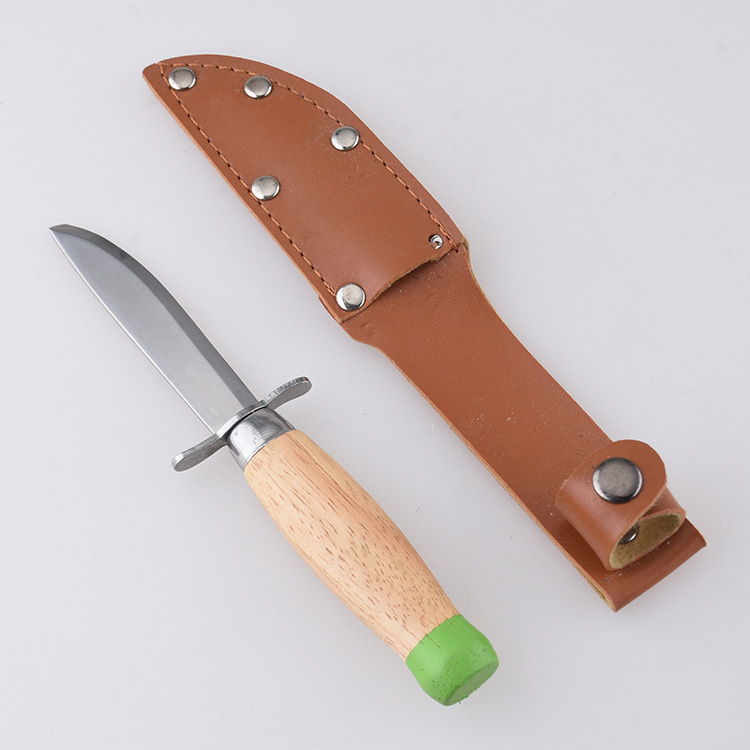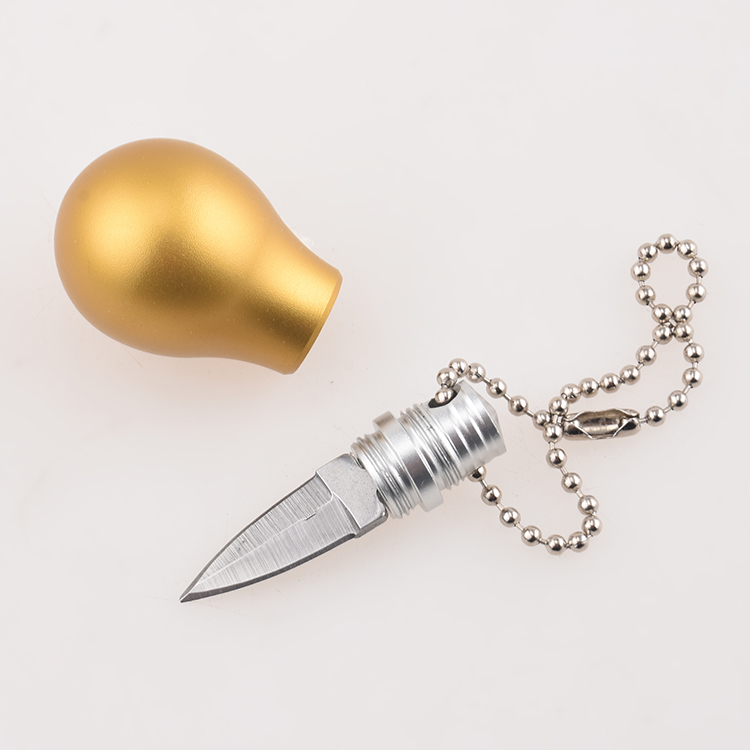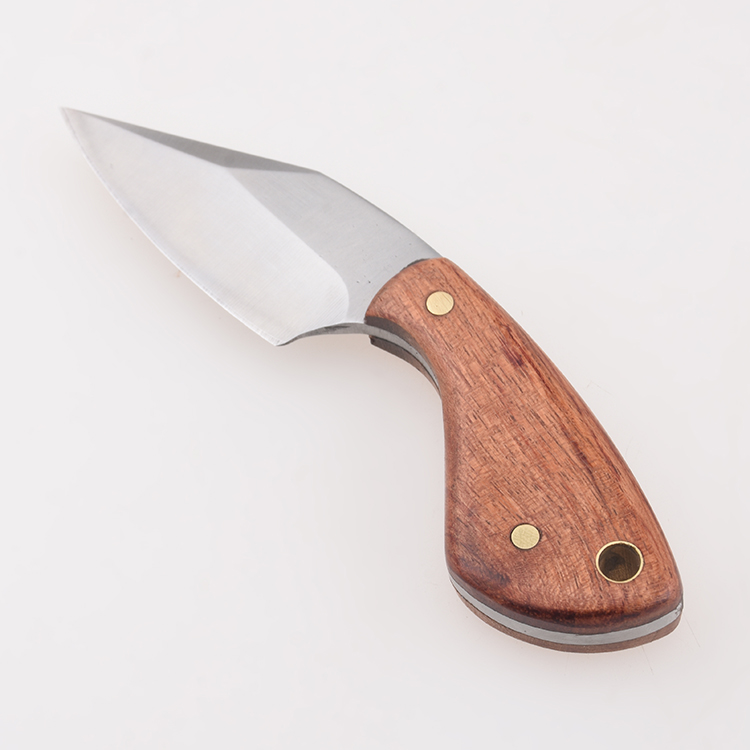Ножи с фиксированным лезвием are the sturdy, reliable equipment in the knife family. They don’t fold or bend; instead, their blades stay fixed in place. These knives are tough, strong, and can handle a lot of tasks.
This article is all about fixed blade knives. We’ll walk you through everything you need to know, from how they’re made to how to take care of them. Whether you’re into outdoor adventures, survival skills, or just like having a dependable tool around, this guide has you covered.
Overview of Fixed Blade Knives
Fixed blade knives are simple yet strong tools. Here’s a basic look at their construction:
- Лезвие: The blade is a single piece of metal that doesn’t fold. It runs from the tip to the base of the handle, making it very strong and durable.
- Ручка: The handle is attached directly to the blade and provides a place to grip. Handles can be made from wood, plastic, metal, or other materials, each offering a different feel and level of comfort.
- Tang: The tang is the part of the blade that goes into the handle. A full tang means the blade extends all the way through the handle, adding extra strength.
- Guard or Bolster (optional): Some fixed blade knives have a guard or bolster between the blade and handle. This helps protect your hand from slipping onto the blade and can also enhance the knife’s look.
The blade is securely fixed to the handle in several ways:
- Полный Тан: The blade runs the entire length of the handle, with handle material attached to the sides. This is very strong.
- Частичный Тан: The blade goes partway into the handle and is attached using glue or bolts. This method is less strong than a full tang but can be lighter.
- Encapsulated Tang: The tang is completely enclosed within the handle material, giving a sleek look and protecting the tang.
This simple but strong construction makes fixed blade knives reliable tools for many tasks.
Fixed Blade vs. Folding Knives
Main Differences:
Ножи с фиксированным лезвием: These knives have a blade that is permanently fixed in an open position. The blade extends into the handle and does not fold.
Складные ножи: These knives have a blade that can fold into the handle, making them more compact and easier to carry in a pocket.
Advantages and Suitable Scenarios:
Ножи с фиксированным лезвием:
- Преимущества: Stronger and more durable, easier to clean, quicker to deploy since there’s no need to open the blade.
- Scenarios: Best for heavy-duty tasks, survival situations, hunting, and camping where strength and reliability are crucial.
Складные ножи:
- Преимущества: Compact, easy to carry, safer to store when not in use.
- Scenarios: Ideal for everyday carry (ЕДГ), light tasks, and situations where portability is important.
Types of Fixed Blade Knives
- Использование: Built for survival situations. Used for tasks like building shelters, cutting wood, preparing food, and self-defense.
- Design Features: Usually have a strong, thick blade with a full tang. Often include additional features like a serrated edge, fire starter, or a hollow handle for storing small survival items.
Hunting Knives:
- Использование: Designed for hunters. Used for skinning, gutting, and processing game.
- Design Features: Typically have a curved blade for efficient skinning and a gut hook for opening the animal’s abdomen without damaging the internal organs.
Tactical Knives:
- Использование: Used by military and law enforcement. Suitable for combat and utility tasks.
- Design Features: Sturdy and often designed for quick deployment. May include a tanto blade for piercing, a partially serrated edge for cutting through tough materials, and a non-reflective finish.
Utility Knives:
- Использование: General-purpose knives for various tasks around the house, in the garden, or on a job site.
- Design Features: Simple, versatile designs with a straight or slightly curved blade. Durable and easy to sharpen.
Each type of fixed blade knife is designed with specific tasks in mind, making them highly effective for their intended use. Whether you’re preparing for a camping trip, going on a hunt, or needing a reliable tool for emergencies, there’s a fixed blade knife suited to your needs.
Materials and Manufacturing Processes
Common Materials:
- Steels: Fixed blade knives are often made from high-carbon steel, stainless steel, or tool steel.
- Высокая углеродистая сталь: Known for its sharpness and edge retention but requires regular maintenance to prevent rust.
- Нержавеющая сталь: Resistant to rust and corrosion, making it ideal for wet environments, but may require more frequent sharpening.
- Инструментальная сталь: Extremely durable and maintains sharpness well but can be more challenging to sharpen.
- Handles: Handles are made from materials such as wood, plastic, rubber, and composites (e.g., G-10, Micarta).
- Древесина: Offers a classic look and good grip but needs regular maintenance.
- Plastic/Rubber: Durable and easy to clean, often used for tactical and utility knives.
- Composites: Highly durable, resistant to environmental factors, and provide excellent grip.
Heat Treatment and Manufacturing Processes:
- Термическая обработка: This process involves heating and cooling the steel to achieve the desired hardness and toughness. Proper heat treatment improves edge retention and durability.
- Quenching: Rapid cooling of the blade to harden it.
- Tempering: Reheating the blade to a lower temperature to reduce brittleness and increase toughness.
Manufacturing Processes:
- Forging: The steel is heated and hammered into shape. Forged blades are typically stronger and more durable.
- Stock Removal: The blade shape is cut out from a flat piece of steel. This method is more precise and often used for mass production.
Use and Maintenance of Fixed Blade Knives
Correct Methods for Using Fixed Blade Knives:
- Grip: Hold the knife firmly by the handle, ensuring a secure grip to prevent slipping.
- Cutting: Use smooth, controlled motions. Let the sharpness of the blade do the work rather than applying excessive force.
- Safety: Always cut away from your body and keep your fingers clear of the blade.
Maintaining and Sharpening Fixed Blade Knives:
- Cleaning: After each use, clean the blade with warm, soapy water and dry it thoroughly to prevent rust.
- Oiling: Apply a light coat of oil to the blade to protect it from moisture, especially if it’s made of high-carbon steel.
- Заточка: Regularly sharpen the blade using a whetstone, sharpening rod, or electric sharpener. Follow the blade’s original angle and use even, consistent strokes.
- Storing: Store the knife in a dry place, ideally in a sheath or protective cover, to prevent damage to the blade and handle.
By understanding the materials and производство processes of fixed blade knives, you can appreciate their design and performance. Proper use and maintenance ensure your knife remains a reliable tool for years to come.
Legal and Regulatory Considerations
Legal Restrictions: Fixed blade knives are regulated differently around the world:
- Соединенные Штаты: Varies by state; some have blade length restrictions and rules on carrying.
- Великобритания: Generally illegal to carry without a good reason; blade length limits apply.
- Canada: Prohibited to carry without a legitimate reason.
- Australia: Strict laws on possession and carrying without a lawful excuse.
- European Union: Rules differ by country, often with blade length and carrying method restrictions.
Guidance on Legal Carrying and Use:
- Check Local Laws: Always verify your area’s knife laws.
- Valid Reasons: Carry for work, hunting, fishing, or outdoor activities.
- Safe Carrying: Use a sheath and secure the knife properly. Avoid public carrying unless necessary.
- Responsible Use: Use knives safely and responsibly to avoid legal issues.
Famous Fixed Blade Knives and Manufacturers
Famous Fixed Blade Knives:
KA-BAR USMC Fighting Knife (KA-BAR)
- Why It’s Favored: Durable and historically significant, popular among military and outdoor enthusiasts.
Buck 119 Special (Buck Knives)
- Why It’s Favored: Classic design, sharpness, ideal for hunting and camping.
ESEE-6 (ESEE Knives)
- Why It’s Favored: Rugged and versatile, great for survival with full tang construction.
Гербер СтронгАрм (Gerber)
- Why It’s Favored: Robust, affordable, trusted by outdoor enthusiasts and military.
Morakniv Companion (Morakniv)
- Why It’s Favored: Affordable, lightweight, and excellent for general outdoor use and bushcraft.
These knives are favored for their strength, reliability, and specialized features, making them trusted tools worldwide.
Selection and Purchase Guide
When choosing a fixed blade knife, consider the following factors:
1. Purpose:
- Занятия на улице: For camping, hiking, or survival, look for a knife with a sturdy, versatile blade and a comfortable grip.
- Охота: Choose a knife designed specifically for hunting tasks, like skinning and gutting, with features such as a gut hook.
- Tactical Use: For military or law enforcement, opt for a knife with a robust build, quick deployment, and possibly a non-reflective finish.
- General Use: For everyday tasks and utility work, select a versatile knife with a straightforward design.
2. Blade Material:
- Высокая углеродистая сталь: Excellent edge retention and sharpness, but requires regular maintenance to prevent rust.
- Нержавеющая сталь: Resistant to rust and corrosion, ideal for wet conditions, but may need more frequent sharpening.
- Инструментальная сталь: Highly durable and maintains sharpness well, though can be harder to sharpen.
3. Handle Material:
- Древесина: Offers a classic look and good grip but needs maintenance.
- Plastic/Rubber: Durable and easy to clean, suitable for tactical and utility knives.
- Composites (e.g., G-10, Micarta): Very durable, resistant to environmental factors, and provide excellent grip.
4. Design Features:
- Полный Тан: Provides maximum strength and durability, ideal for heavy-duty use.
- Guard/Bolster: Offers extra safety by preventing your hand from slipping onto the blade.
5. Quality and Brand:
- Reputable Brands: Choose knives from well-known manufacturer
- User Reviews: Check reviews to see how the knife performs in real-world situations.
6. Price:
- Бюджет: Decide on your budget. High-quality knives can be more expensive but are often worth the investment for their longevity and performance.
- Value: Look for knives that offer the best features and build quality within your budget.
7. Personal Preference:
- Comfort: Ensure the knife feels comfortable in your hand. A good grip is essential for safe and efficient use.
- Эстетика: Choose a design that appeals to you, as you’ll likely be more satisfied with a knife that you find visually pleasing.
By considering these factors, you can select a fixed blade knife that suits your needs and preferences, ensuring you have a reliable tool for any task.
Заключение
In conclusion, fixed blade knives are sturdy and dependable tools suitable for various tasks. When selecting one, consider its purpose, materials, design, and legal requirements. Adhering to local laws ensures safe and responsible usage. For top-quality customized knives, Шилдон, with its long-standing expertise since 1998, offers reliability and excellence. Armed with the right knowledge and the appropriate knife, you’re equipped for any task ahead.
Часто задаваемые вопросы
- What are the common types of fixed blade knives?
- Ножи выживания: Built for tough tasks like building shelters, cutting wood, and preparing food in survival situations.
- Охотничьи ножи: Designed for skinning and processing game, often featuring a gut hook for field dressing.
- Тактические ножи: Used by military and law enforcement for combat and utility tasks, known for their robustness and quick deployment.
- Универсальные ножи: General-purpose knives for everyday tasks, DIY projects, and gardening.
- Bowie Knives: Large, clip-point blades known for their historical significance and versatile use.
- What are the legal restrictions on carrying fixed blade knives in different countries and regions?
- Соединенные Штаты: Laws vary by state; restrictions on blade length and carrying methods apply.
- Великобритания: Generally illegal to carry without a good reason; specific blade length restrictions exist.
- Canada: Prohibited to carry without a valid reason.
- Australia: Strict laws on possession and carrying without a lawful excuse.
- European Union: Different rules by country; common restrictions on blade length and public carrying.
- What are some historically famous designs of fixed blade knives?
- KA-BAR USMC Fighting Knife: Known for its use by the US Marines in WWII, valued for its durability and effectiveness.
- Охотничий нож: Made famous by James Bowie in the 19th century, known for its large, curved blade and versatility.
- Puukko: Traditional Finnish knife used for general tasks, characterized by its simple, straight blade and wooden handle.
- What are the common uses of fixed blade knives in wilderness survival?
- Shelter Building: Cutting branches and other materials to construct shelters.
- Fire Making: Splitting wood and creating tinder for starting fires.
- Готовка еды: Hunting, cleaning, and preparing game or fish.
- Self-Defense: Protection against wild animals or threats.
- First Aid: Cutting bandages or fabric for medical emergencies.
- What are the manufacturing processes for fixed blade knives?
- Forging: Heating and hammering steel into shape, resulting in a very strong and durable blade.
- Stock Removal: Cutting and grinding a blade shape from a flat piece of steel, often used for precise and consistent production.
- Термическая обработка: Processes like quenching and tempering to harden the blade and improve its toughness.
- Grinding and Polishing: Shaping the blade edge and finishing the surface for sharpness and aesthetic appeal.
- Handle Attachment: Fixing the handle to the blade using methods like pinning, riveting, or encapsulating the tang.









